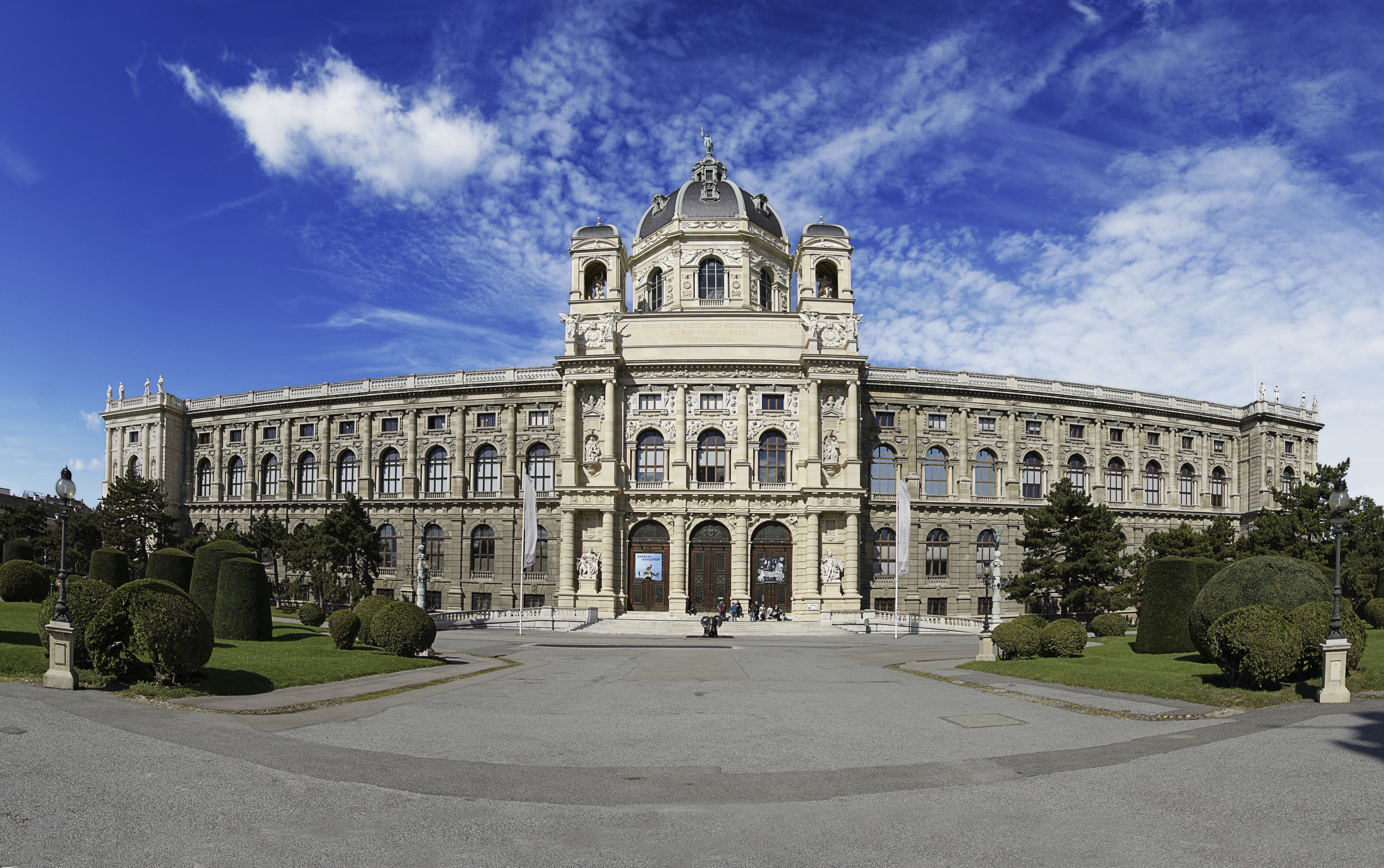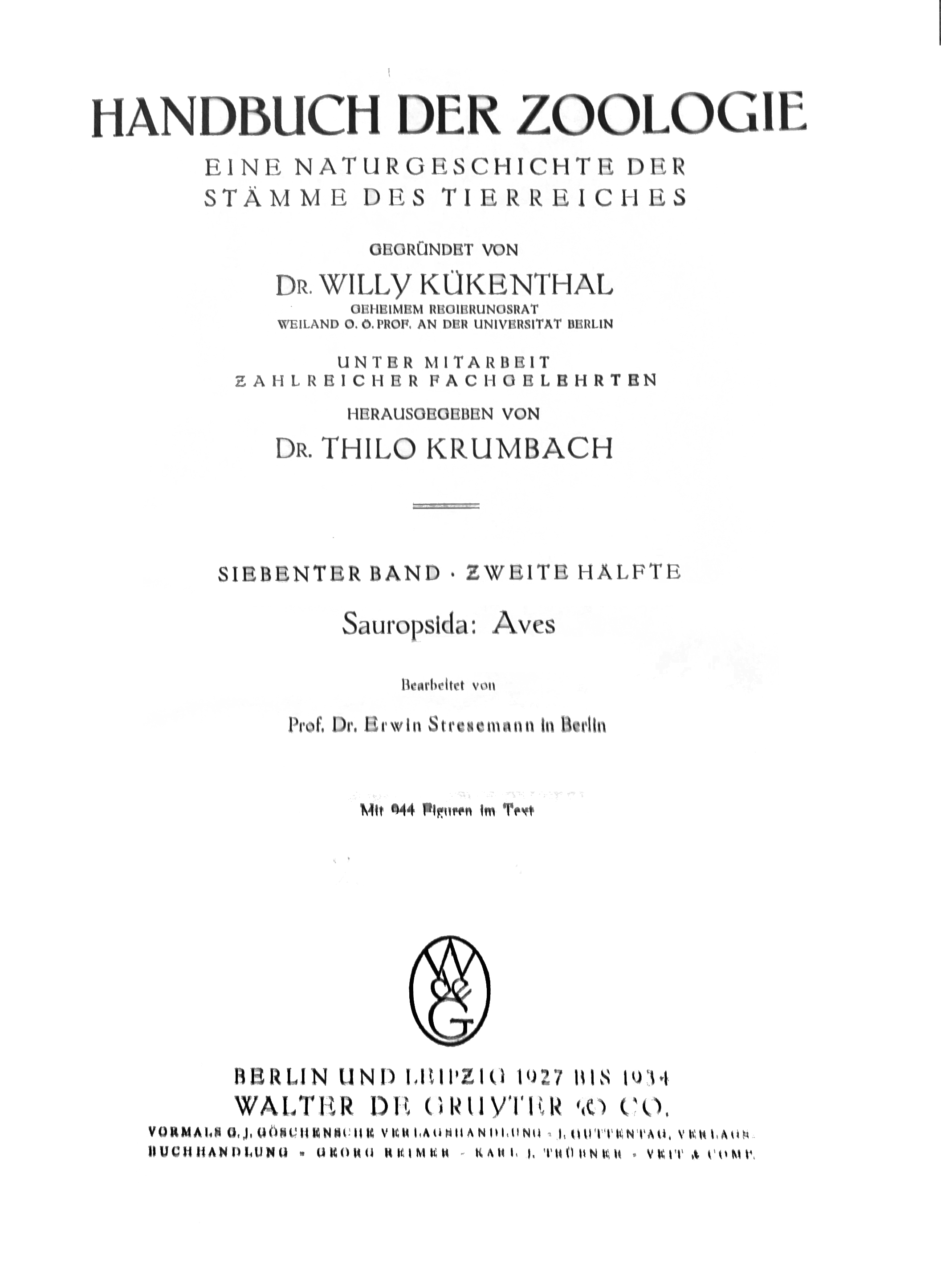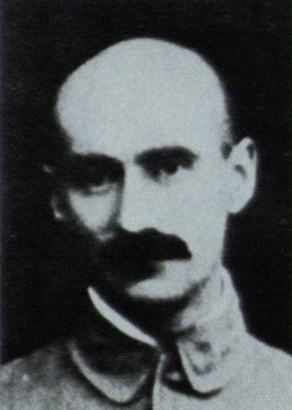|
Moritz Sassi
Moriz Sassi or Moritz Sassi (13 June 1880 – 25 September 1967) was an Austrian ornithologist who worked at the Natural History Museum in Vienna. In 1933 he was made a government councilor and given the title of ''hofrat''. Life and work Sassi was born in Vienna to Eugen and Ida who owned the Schwindgasse palace in Vienna and Villa Sassi in northern Italy. Sassi went to school at Hegelgasse and volunteered with the Dragoons. He then studied zoology at the University of Vienna under Karl Grobben and Berthold Hatschek writing a dissertation on the anatomy of ''Anomia ephippium'' for which he received a doctorate in 1903. He then followed an interest in art. In 1905 he joined an expedition into Anglo-Egyptian Sudan led by Franz Werner and collected numerous specimens of birds and mammals, and describing several as new to science including ''Procavia slatini'' (now merely a synonym for the rock hyrax) dedicated to his friend Rudolf Slatin. In 1908 he joined the Natural History Mus ... [...More Info...] [...Related Items...] OR: [Wikipedia] [Google] [Baidu] |
Natural History Museum, Vienna
The Natural History Museum Vienna () is a large natural history museum located in Vienna, Austria. The NHM Vienna is one of the largest museums and non-university research institutions in Austria and an important center of excellence for all matters relating to natural sciences. The museum's 39 exhibition rooms cover 8,460 square meters and present more than 100,000 objects. It is home to 30 million objects available to more than 60 scientists and numerous guest researchers who carry out basic research in a wide range of topics related to human sciences, earth sciences, and List of life sciences, life sciences. The ''Index Herbariorum'' code assigned to this museum is W and it is used when citing housed herbarium specimens. History The earliest collections of the Natural History Museum Vienna date back more than 250 years. It was the Holy Roman Emperor Francis I, Holy Roman Emperor, Francis I, Maria Theresa’s husband, who in 1750 purchased what was at the time the world's ... [...More Info...] [...Related Items...] OR: [Wikipedia] [Google] [Baidu] |
Viktor Pietschmann
Viktor Pietschmann (27 October 1881 – 11 November 1956) was an Austrian ichthyologist at the Vienna Museum of Natural History. He was the curator of the fish collection from 1919 to 1946 and made collecting trips to the Barents Sea, Greenland, Mesopotamia, Armenia, Hawaii, Romania, and Poland. Pietschmann described many new fish, including several species of shark, and had more than 50 publications over his career. He served in the Austrian army in World War I, during which he was stationed in the Ottoman Empire. While there, Pietschmann witnessed the Armenian genocide and took many photographs of the deportees. He joined the National Socialist German Workers' Party (NSDAP) in 1932 and remained a member until the end of World War II. His zoological author abbreviation is Pietschmann. Early life Viktor Pietschmann was born in Vienna, Austria to parents Karl Pietschmann and Ida in 1881. He graduated in 1899 from the Piaristengymnasium in Vienna and furthered his studies at th ... [...More Info...] [...Related Items...] OR: [Wikipedia] [Google] [Baidu] |
1880 Births
Events January *January 27 – Thomas Edison is granted a patent for the incandescent light bulb. Edison filed for a US patent for an electric lamp using "a carbon filament or strip coiled and connected ... to platina contact wires." granted 27 January 1880 Although the patent described several ways of creating the carbon filament ,including using "cotton and linen thread, wood splints, papers coiled in various ways," Edison and his team later discovered that a carbonized bamboo filament could last more than 1200 hours. * January **The international White slave trade affair scandal in Brussels is exposed and attracts international infamy. **The Gokstad ship is found in Norway, the first Viking ship burial to be excavated. February * February 2 ** The first electric streetlight is installed in Wabash, Indiana. ** The first successful shipment of frozen mutton from Australia arrives in London, aboard the SS ''Strathleven''. * February 4 – The Black Donnelly Massa ... [...More Info...] [...Related Items...] OR: [Wikipedia] [Google] [Baidu] |
Sassius Simplex
Loten's sunbird (''Cinnyris lotenius''), also known as the long-billed sunbird or maroon-breasted sunbird, is a sunbird endemic to peninsular India and Sri Lanka. Named after Joan Gideon Loten, who was the Dutch governor of colonial Ceylon, it is very similar to the purple sunbird that is found in the same areas and also tends to hover at flowers for nectar, but can be distinguished by the longer bill, the maroon band on the breast and brownish wings. Like other sunbirds, it is also insectivorous and builds characteristic hanging nests. Description Loten's sunbirds are small, only 12–13 cm long. The long bill separates this from the syntopic purple sunbird. The wings are browner and the maroon breast band is visible on the male under good lighting conditions. The males have of yellow mixed with crimson that are used in displays. The adult male is mainly glossy purple with a grey-brown belly. The female has yellow-grey upperparts and yellowish underparts, but lacks the ... [...More Info...] [...Related Items...] OR: [Wikipedia] [Google] [Baidu] |
Ernst Hartert
Ernst Johann Otto Hartert (29 October 1859 – 11 November 1933) was a widely published German ornithologist. Life and career Hartert was born in the Free and Hanseatic City of Hamburg on 29 October 1859. In July 1891, he married the illustrator Claudia Bernadine Elisabeth Hartert in Frankfurt am Main, Germany, with whom he had a son named Joachim Karl (Charles) Hartert, (1893–1916), who was killed as an English soldier on the Somme. Together with his wife, he was the first to describe the blue-tailed Buffon hummingbird subspecies (''Chalybura buffonii intermedia'' Hartert, E & Hartert, C, 1894). The article ''On a collection of Humming Birds from Ecuador and Mexico'' appears to be their only joint publication. Hartert was employed by Walter Rothschild, 2nd Baron Rothschild as ornithological curator of Rothshild's private Natural History Museum at Tring, in England from 1892 to 1929. Hartert published the quarterly museum periodical ''Novitates Zoologicae'' (1894–39) wi ... [...More Info...] [...Related Items...] OR: [Wikipedia] [Google] [Baidu] |
Walter Rothschild, 2nd Baron Rothschild
Lionel Walter Rothschild, 2nd Baron Rothschild, Baron de Rothschild, (8 February 1868 – 27 August 1937) was a British banker, politician, zoology, zoologist, and soldier, who was a member of the Rothschild family. As a Zionist leader, he was presented with the Balfour Declaration, which pledged United Kingdom, British support for a Jewish national home in Palestine (region), Mandatory Palestine. Rothschild was the president of the Board of Deputies of British Jews from 1925 to 1926. Early life Walter Rothschild was born in London as the eldest son and heir of Emma Louise von Rothschild and Nathan Rothschild, 1st Baron Rothschild, an immensely wealthy financier of the international Rothschild financial dynasty and the first Jewish Peerage, peer in England. The eldest of three children, Walter was deemed to have delicate health and was educated at home. As a young man, he travelled in Europe, attending the University of Bonn for a year before entering Magdalene College, Cam ... [...More Info...] [...Related Items...] OR: [Wikipedia] [Google] [Baidu] |
Erwin Stresemann
Erwin Friedrich Theodor Stresemann (22 November 1889, in Dresden – 20 November 1972, in East Berlin) was a German naturalist and ornithologist. Stresemann was an ornithologist of extensive breadth who compiled one of the first and most comprehensive accounts of avian biology of its time as part of the ''Handbuch der Zoologie'' (Handbook of Zoology). In the process of his studies on birds, he also produced one of the most extensive historical accounts on the development of the science of ornithology. He influenced numerous ornithologists around him and oversaw the development of ornithology in Germany as editor of the ''Journal für Ornithologie''. He also took an interest in poetry, philosophy and linguistics. He published a monograph on the Paulohi language based on studies made during his ornithological expedition to the Indonesian island. Early life Stresemann was born in Dresden to Richard, an apothecary and Marie. His grandfather Theodor owned the ''Zum Roten Adler'' pharma ... [...More Info...] [...Related Items...] OR: [Wikipedia] [Google] [Baidu] |
Schönbrunn Palace
Schönbrunn Palace (Austrian German, German: Schloss Schönbrunn ) was the main summer residence of the House of Habsburg, Habsburg rulers, located in Hietzing, the 13th district of Vienna. The name ''Schönbrunn'' (meaning "beautiful spring") has its roots in an artesian well from which water was consumed by the court. The 1,441-room Baroque architecture, Baroque palace is one of the most important architectural, cultural, and historic monuments in the country. The history of the palace and its vast gardens spans over 300 years, reflecting the changing tastes, interests, and aspirations of successive Habsburg monarchs. It has been a major tourist attraction since the mid-1950s. History In 1569, Holy Roman Emperor Maximilian II, Holy Roman Emperor, Maximilian II purchased a large floodplain of the Wien River, Wien river beneath a hill, situated between Meidling and Hietzing. The former owner, in 1548, had erected a mansion called ''Katterburg''. The emperor ordered the area t ... [...More Info...] [...Related Items...] OR: [Wikipedia] [Google] [Baidu] |
Rudolf Grauer
Rudolf Grauer (20 August 1870, Hellbrunn, Salzburg – 17 December 1927, Vienna) was an Austrian explorer and zoologist. He conducted zoological investigations in British East Africa (present-day Uganda) in 1905, German East Africa in 1907, and in the Belgian Congo (1910–11).The Eponym Dictionary of Mammals by Bo Beolens, Michael Watkins, Michael Grayson In 1910 he was among the first Europeans to come in contact with the Mbuti people, Mambuti. He died from actinomycosis, which he had contracted in Africa. His African collections are housed at the Naturhistorisches Museum in Vienna. Eponymy Birds: *Grauer's broadbill, ''Pseudocalyptomena graueri'' *Grauer's cuckooshrike, ''Coracina graueri'' *Grauer's swamp warbler, ''Brady ...[...More Info...] [...Related Items...] OR: [Wikipedia] [Google] [Baidu] |
Emil Weiske
Emil Weiske (1867, Dolsenhain bei Altenburg – 1950, Saalfeld) was a German naturalist. Emil Weiske was a professional collector of insects and birds. He emigrated to California in 1890 and to Hawaii in 1892. He made expeditions to the Fiji Islands in 1894 and to New Zealand and Australia in 1895. He became a professional collector in New Guinea dealing especially in birds of paradise (1895 -1900). Later expeditions were to Northeast Siberia, Lake Baikal and North-Mongolia (1908) and then to Patagonia (mainly to the Rio Negro und Limay) and Paraguay (mainly) Concepcion (1911). His collections were mostly birds, mammals, molluscs, reptiles and amphibians, beetles, butterflies, herbaria and ethnological artefacts. His associates were, among others George Meyer-Darcis, Carl Ribbe, Friedrich Wilhelm Niepelt, the Otto Staudinger Staudinger & Bang-Haas dealership Walter Rothschild and Henley Grose-Smith. He maintained a private museum in Saalfeld where he gave lectures on ... [...More Info...] [...Related Items...] OR: [Wikipedia] [Google] [Baidu] |
University Of Vienna
The University of Vienna (, ) is a public university, public research university in Vienna, Austria. Founded by Rudolf IV, Duke of Austria, Duke Rudolph IV in 1365, it is the oldest university in the German-speaking world and among the largest institutions of higher learning in Europe. The university is associated with 17 List of Nobel laureates, Nobel Prize winners and has been the home to many scholars of historical and academic importance. History Middle Ages to the Enlightenment The university was founded on March 12, 1365, by Rudolf IV, Duke of Austria, hence the name "Alma Mater Rudolphina". After the Charles University in Prague (1347) and Jagiellonian University in Kraków (1364), the University of Vienna is the third oldest university in Central Europe and the oldest university in the contemporary German-speaking world; it remains a question of definition as the Charles University in Prague was German-speaking when founded, too. However, Pope Urban V did not ratify th ... [...More Info...] [...Related Items...] OR: [Wikipedia] [Google] [Baidu] |
Ludwig Lorenz Von Liburnau
Ludwig Lorenz von Liburnau (26 August 1856 in Fiume – 9 December 1943 in St. Gilgen) was an Austrian zoologist. He was the son of naturalist Josef Roman Lorenz von Liburnau (1825–1911). In 1879 he obtained his PhD from the University of Vienna, receiving his habilitation in zoology in 1898. From 1880 to 1922 he was associated with the '' Naturhistorisches Museum'' in Vienna. In 1899 he was the first scientist to provide analysis of '' Hadropithecus stenognathus'' (an extinct species of lemur), a study based on a mandible discovered by fossil collector Franz Sikora at Andrahomana cave in southeastern Madagascar. At the time, Lorenz believed the specimen to be the mandible of an anthropoid primate species. The North Island kaka ('' Nestor meridionalis septentrionalis''), a nationally endangered bird from New Zealand New Zealand () is an island country in the southwestern Pacific Ocean. It consists of two main landmasses—the North Island () and the South Island () ... [...More Info...] [...Related Items...] OR: [Wikipedia] [Google] [Baidu] |






